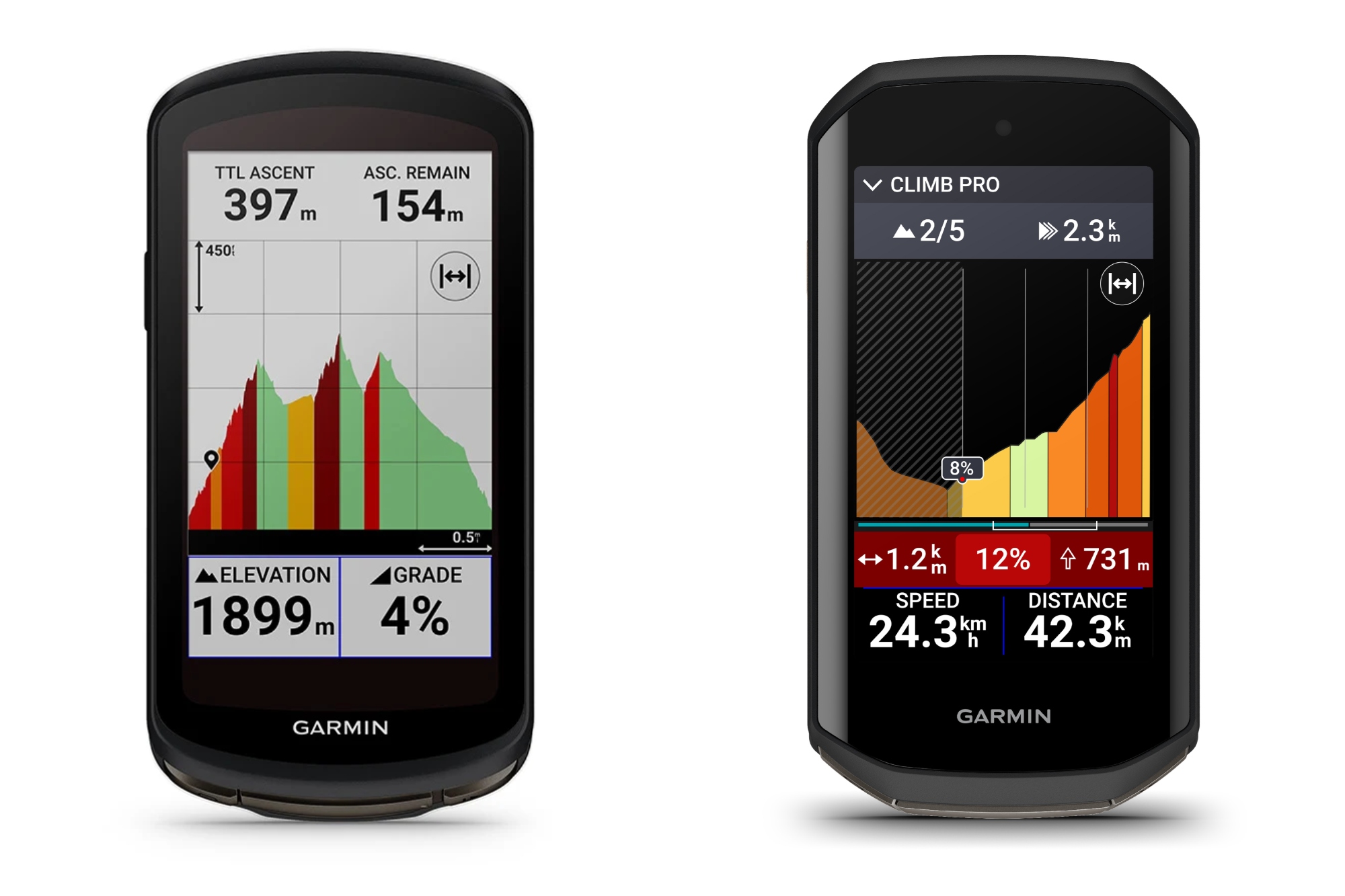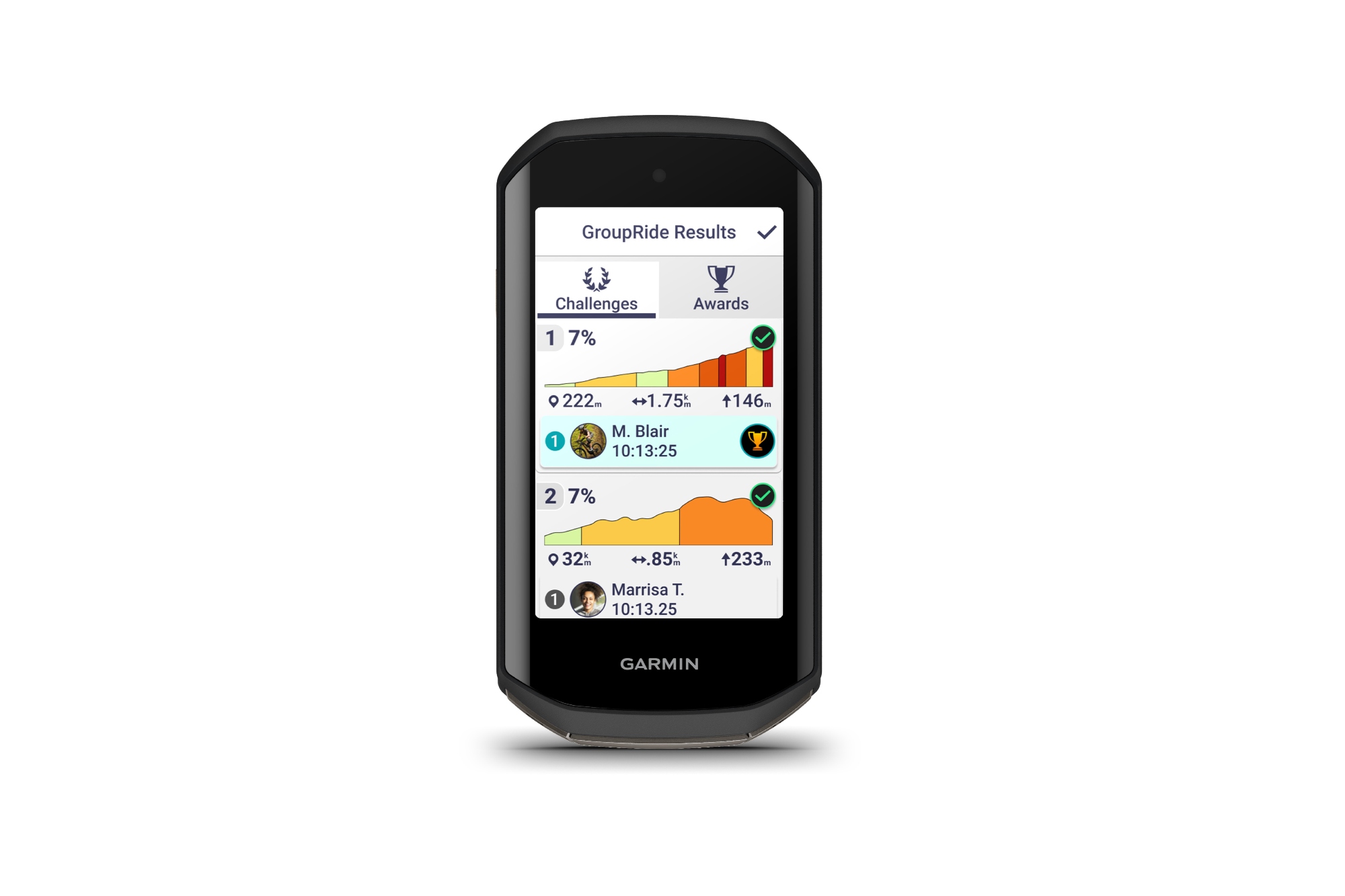The new Garmin Edge 1050 finally gets Garmin Pay, but is it worth upgrading just for the extra bells and whistles?
New Garmin Edge 1050 gets Garmin Pay, a brighter high resolution screen, and a slew of software upgrades.


The Garmin Edge 1050 has been unveiled today, making it the fifth generation of the brand's range-topping bike computer range.
The flagship product finally gains the addition of Garmin Pay. It's been a long time coming, with the best smartwatches range supporting the feature for a few years.
Badged by the brand as the most capable and highest-performing best bike computer, the launch of the Garmin Edge 1050 has felt decidedly soft, with little fanfare to the herald in the newcomer.
It's a stark change from a usual remodelled product reveal, but perhaps when you design in digital bells you assume the model will do the tintinnabulation itself.
Yes, because the other big deal is the Garmin Edge 1050 features a digital bell.
The brand would probably argue that the brighter and clearer screen is the biggest headline, but as someone who has written on the love of bike bells, and tried to purchase a cafe stop coffee with a Garmin in the past, these updates trump the move to a liquid crystal display, and significantly improved display resolution.
Garmin Edge 1050 Vs Edge 1040
Coincidentally, today also marks almost two years to the day since the brand launched its last top-end bike computer, the Garmin Edge 1040, which showcased significant hardware updates, such as solar powered battery charging and the addition of multi-band GNSS (Global Navigation Satellite System) technology.
The latest race content, interviews, features, reviews and expert buying guides, direct to your inbox!
This time around, changes between this and the outgoing model are significantly fewer. To that end, most of the new features are within the software, mimicking many found on your mobile, making it user-experience focused.
While Garmin has built on the well-laid foundations that the Edge 1040 bequeathed, it's interesting to see some significant features fail to carry over. It's a curious move to launch a model with less technical performance than the incumbent version, with the solar charging getting the flick, and with it a significant downgrade in battery life.
The new Garmin Edge 1050 predicts up to 20 hours of battery life when under demanding use, down from up to 45 hours on the Edge 1040. Battery save mode also diminishes by around forty percent to just 60 hours. And no, there's no word as yet from Garmin as to a 1050 Solar model waiting in the sidelines.

Garmin Edge 1040 (left) next to the new Garmin Edge 1050 (right)
This battery life hit is partly due to the new larger, brighter and more detailed screen, which now contains 480x800 pixels compared to 282x470 pixels of the outgoing model.
When visually comparing this new model to the Edge 1040, there’s little to tell the two apart. It’s what Garmin calls a ‘refreshed design’, as opposed to a redesign, meaning that the casing is now a little more angled and slimmer. Buttons are now all-metal, and the quarter-turn mount is now replaceable for better longevity.
But the new Garmin Edge 1050's focus is primarily on rider experience. According to the brand, the GroupRide feature, which historically has allowed Edge equipped riders to message each other, as well as share locations and incident detection has been updated.
As well as allowing fellow riders to stay connected with in-ride messaging, live locations, and incident detection, you can now set alerts that can notify and route fellow riders to a cyclist in need of help.
Leader boards and awards

The brand has also built a fun side to the Garmin Edge 1050, with in-ride leaderboards for climbs, as well as post-ride awards. Garmin say that these include titles such as ‘Speed Racer’ for the highest max speed, ‘Chatterbox’ for the rider using the GroupRide messaging feature the most, and ‘Worker Bee’ for the rider who acclimated the most time spent pedaling, again assuming riders have the compatible sensors.
The safety features of the Edge 1050 GroupRide feature have also been upgraded so that road or trail hazards, reported by other users of the technology, appear on screen. Naturally, there is also the ability to flag any yourself.
If the hazard of hazard alert notifications concerns you - then worry not. The addition of a built-in speaker will now audibly alarm users of red flags. The speaker will even holler workout and navigation prompts.
In theory, a helpful feature to help keep eyes on the road (or trail) although the drill sergeant approach to bike riding might wear a little thin on your riding companions and communities, as claxons and GPS passive-aggressive cues narrate your ride.
Improved navigation
Talking of ride navigation, the new Garmin Edge 1050 also has an on-device course creator. The brand say this will allow users to create courses right on the device using the responsive touchscreen.
This course creation feature is supported by practical features, such a surface type to choose paved or unpaved roadways while riding, and to benefit from audible alerts for upcoming unpaved sections.
Garmin say that you can even share the new ride details with other devices, assuming they support the feature.
Metrics
All the usual features are of course still there, with riding metrics by the dozen, many of which are free from Garmin, with Firstbeat Analytics providing training insights on VO2 Max, training status, heat, and altitude acclimatisation to help evaluate your training.
Garmin also says that the onboard power guide now takes wind data and the rider's current stamina into account to make real-time adjustments to power targets.
Further data display and recording features should help you analyse your riding on a granular level, but this isn't exactly new territory for the brand that is built on its data-harnessing abilities.
The question is then, with a price tag of £649.99/ $699.99, is the latest Garmin Edge 1050 worth upgrading to just for the software updates and a better screen?
There's no doubt the new features on this latest model are of huge benefit to Garmin fans. However, the lack of solar and the decline in battery life will be a concern for some.
The brighter, higher resolution screen is most welcome, and the onboard course creation almost allows you do away with the need for Strava and Komoot membership. And, with Garmin Pay now included, you could almost leave your mobile phone at home... if only you didn't need a phone for all the bells and whistles to actually work.
Hannah is Cycling Weekly’s longest-serving tech writer, having started with the magazine back in 2011. She has covered all things technical for both print and digital over multiple seasons representing CW at spring Classics, and Grand Tours and all races in between.
Hannah was a successful road and track racer herself, competing in UCI races all over Europe as well as in China, Pakistan and New Zealand.
For fun, she's ridden LEJOG unaided, a lap of Majorca in a day, won a 24-hour mountain bike race and tackled famous mountain passes in the French Alps, Pyrenees, Dolomites and Himalayas.
She lives just outside the Peak District National Park near Manchester UK with her partner, daughter and a small but beautifully formed bike collection.
